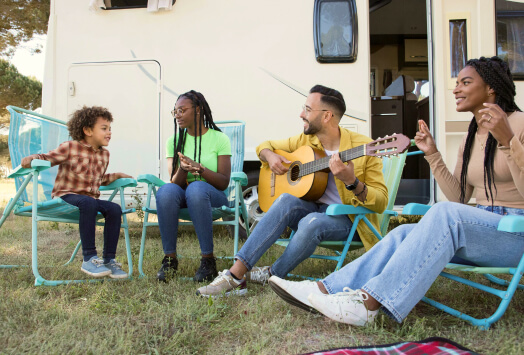What if there was a programming language that was simple enough for kids to learn — and could be put into real-world action almost right away? Meet JavaScript, which is an essential part of almost every website you visit. Animations, multimedia, updating content — JavaScript is what makes web pages dynamic and interactive, and your child can learn how to use it to build cool stuff on the web.
If you’re looking for a way to get your child excited about coding with tangible, practical results (and a programming language that will teach them valuable professional coding skills), here’s how to introduce them to JavaScript.
Is it hard to learn JavaScript?
Step one of getting your child into JavaScript might not involve JavaScript at all. JavaScript could work as your child’s first programming language, but if they’ve never coded before, there are even simpler languages that might be better to start with. These languages give your child the chance to build their confidence with coding and see if they really like it.
Scratch is one of the best programming languages for younger kids. MIT designed it specifically for ages 8 to 16. It’s a visual language, which means it’s more intuitive for young coders than text-based languages like JavaScript. Kids can start building games, animations, and stories right away in Scratch, then share their creations online.
Python is also great for young coders. It’s text-based, not visual, but it’s a very readable language that kids should be able to learn without too much headache. And while the payoff of Python may not be as visceral as that of Scratch — you’re not making fun, interactive experiences right away with Python — what you lose in playfulness you gain back in practical usefulness. Python is an extremely powerful language used in many professional applications, so it can grow with your child.
What makes JavaScript a bit more complicated than Python and Scratch? For one, JavaScript’s syntax is more complicated — and, more importantly, to code in JavaScript, you also have to learn two other languages called HTML and CSS. JavaScript, HTML, and CSS are the three core technologies of the World Wide Web. HTML structures web pages, while CSS defines how things look (and sound). JavaScript interacts with HTML and CSS in order to create a graphical user interface (GUI), which is what you see on your computer screen.
Thankfully, HTML and CSS are two of the easiest languages of their kind to learn, and they’re extremely valuable technologies that have many applications across web and mobile development, so they’re well worth teaching kids.
Why is JavaScript good for kids?
With all that said, JavaScript really is one of the best programming languages for kids. Here’s why:
1. Easy to pick up
While JavaScript’s syntax may be a little more complicated than Python’s, it’s still more accessible for kids than most other “real” programming languages. Plus, JavaScript is easy to access — it’s in your browser already.
2. Instant results
Because JavaScript is already in your browser, kids can use it to start building for the web really quickly. This dad who helped his son learn JavaScript remembers showing him how to view the source code of his favorite websites — and how excited he was to learn how to add the word “poop” to the headings of web pages. Small, concrete results like this one get kids excited about coding.
3. Career and job opportunities
JavaScript coders are in high demand. Front-end development — which basically means building user-facing websites and applications — is one of the best pathways into the computer programming industry, and JavaScript (along with HTML and CSS) is essential to front-end development. Your child doesn’t have to become an expert in web development right away, but learning some JavaScript now could prove to be really valuable down the road.
How do you start learning JavaScript?
So what should your child’s first introduction to JavaScript be? First, stick with vanilla JavaScript. You and your child will probably come across all sorts of technologies, languages, and libraries that have been built around JavaScript to make it more powerful or to streamline certain use cases. Don’t get bogged down in all of those complications; just keep it simple with plain JavaScript.
And of course, look for fun ways for your child to learn JavaScript. That could mean a book like JavaScript for Kids — or a fun class with an expert computer programming teacher and other young coders like the virtual JavaScript classes you can find on Sawyer.
Remember, like anything else worth doing, learning to code in JavaScript won’t happen overnight. Support your child as they commit to practicing and growing, and celebrate their successes and creations!
















